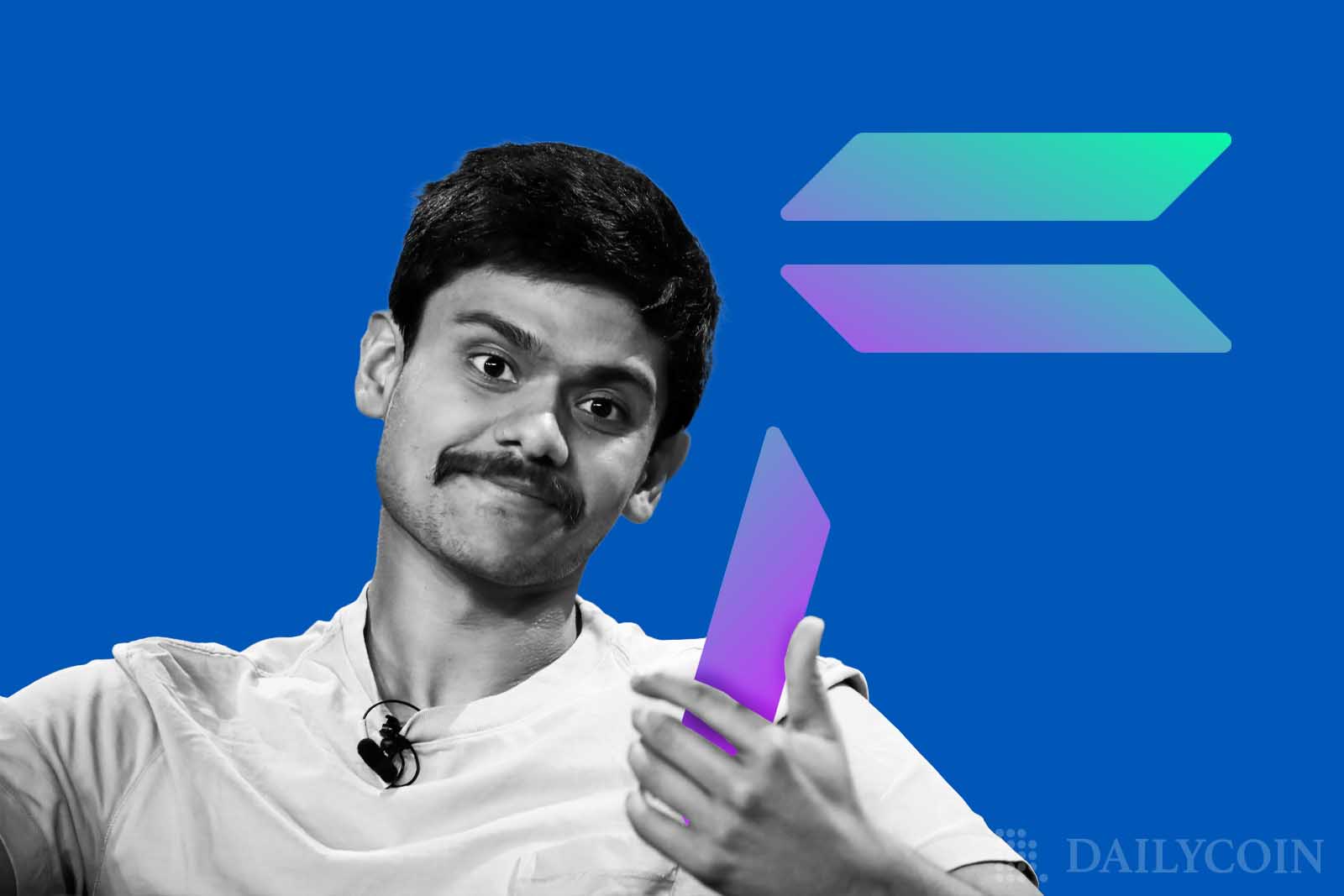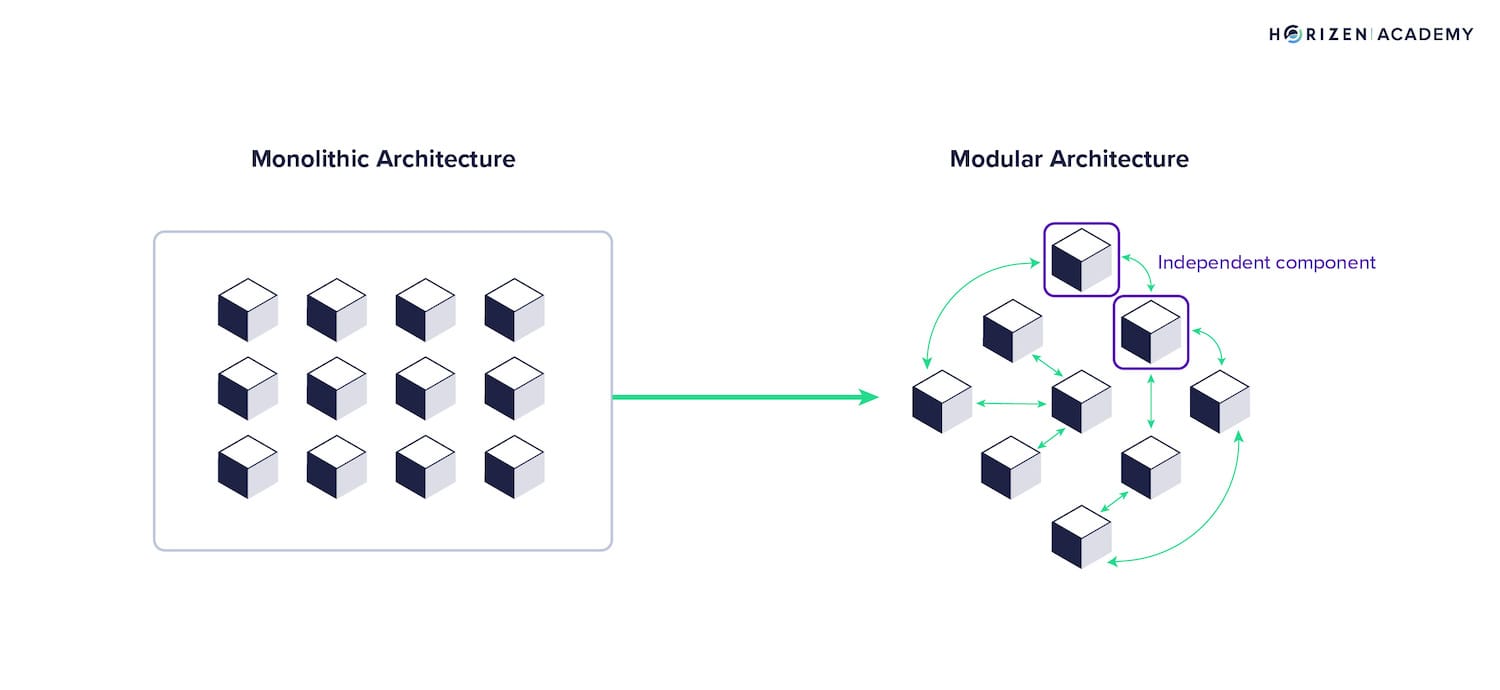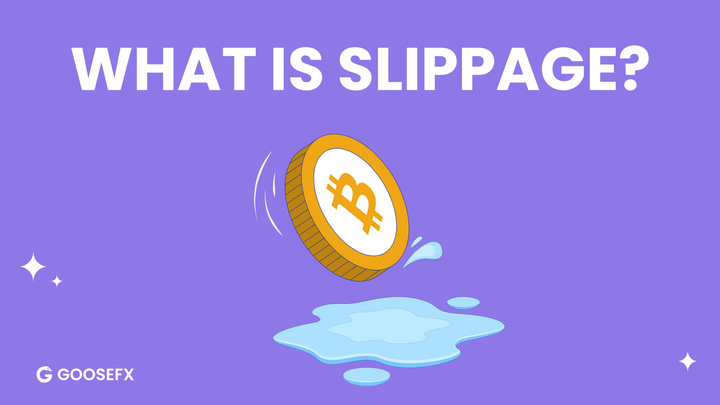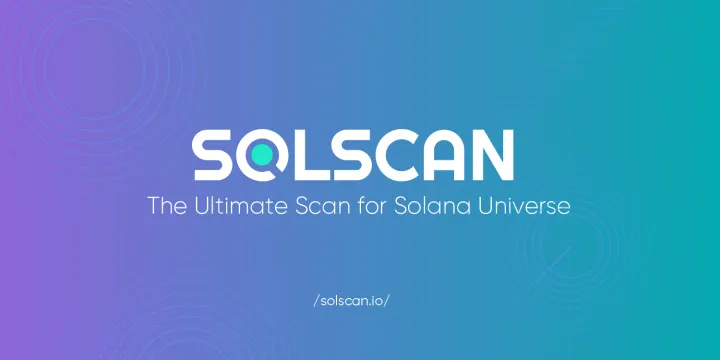What is Firedancer?🔥💃 | Solana
Explore Firedancer: Solana's upcoming update boosting speed and reliability, ensuring smoother and faster transactions, and enhancing network stability for all users.

Table of Content
- Why do we need Firedancer?
- What is a Blockchain Validator?
- What is Proof of Stake?
- What is Slashing?
- Why is Firedancer Being Built?
- Validator Client Diversity
- The Role of Jump Trading
- How is Firedancer Built and How Does it Work?
- What Changes Will Firedancer Bring?
- Setting Up Firedancer
- Advantages of Firedancer
- What is Frankendancer?
- Conclusion
We all have heard about Firedancer, Solana's upcoming game-changer update that will increase network speed and stability and make Solana the fastest blockchain paving the way for institutional and retail investments, but how does it actually work?
In this blog, we will look at what exactly Firedancer 🔥💃 is..
Why do we need Firedancer?
Let's take an example of a fast moving train which is Solana. It can run into delays or problems that slow it down or, worse, stop it entirely. That's where Firedancer comes in.
![r/solana - What's Firedancer on Solana? [In One Image]](https://i.redd.it/3h849zls7npa1.png)
Now, think of Firedancer as a set of 10x engineers. Dedicated to make this train go faster while being reliable and handle even more passengers!
- Firedancer aims to rewrite how the trains engine works (Solana's validator client). Using the programming language C, compared to what we have now which is Rust.
- This new iteration will help Solana handle and scale thousands of transactions per second!
Understanding Validators, Proof of Stake, and Slashing
What is a Blockchain Validator?
Think of a blockchain validator like a referee in a sports game. Just as a referee checks that the rules of the game are followed, a validator ensures that all transactions on a blockchain follow the network's rules.

The main responsibilities of a Validator are:
- Verify Transactions: To check and confirm that each transaction is correct, ensuring that the sender has sufficient funds and that the transaction follows the network guidelines.
- Maintain Security: The Validator monitors for suspicious activities to prevent issues like double-spending (where someone tries to spend the same crypto twice).
- Staking: To become a validator, participants must lock up a certain amount of the network's currency like SOL. This deposit acts as a security bond, which is at risk if they act dishonestly. (ex: staking SOL with Helius Validator)
- Incentives: Validators are compensated for their efforts in transaction fees and, depending on the network, may also receive block rewards.
How are they different from miners? Well,
- Miners use powerful computers to solve complex mathematical problems in Proof of Work or PoW networks like Bitcoin, consuming a lot of energy.
- Validators only need to stake the blockchain native cryptocurrency to participate, which requires significantly less energy than mining.
What is Proof of Stake?
Think of PoS like a club membership, where your influence in club depends on how many shares you own at the club. The more shares you have, the more you can influence the club decisions; choosing a club leader or deciding on club activities.

Proof of Stake is a consensus mechanism used by certain blockchains as a more energy-efficient alternative to Proof of Work or PoW, which requires extensive computing power and energy.
- How It Works
- Staking: Instead of using computer power to mine blocks, PoS requires participants (nodes) to "stake" their cryptocurrency as a form of security deposit.
- Validator Selection: Validators, who verify transactions and create new blocks, are chosen based on the amount of cryptocurrency they stake. The more you stake, the higher your chances of being selected.
- Energy Efficiency: By requiring a stake instead of continuous computational work, PoS significantly reduces the energy consumption of the blockchain.
- Incentives and Security
- Rewards: Validators earn rewards in the form of transaction fees or new coins from the blocks they help validate.
- Dishonesty Penalties (Slashing): If a validator acts dishonestly (like approving a fraudulent transaction), they can lose some or all of their staked coins, thus incentivising honest behaviour.
- Fairness Mechanisms: Techniques such as randomisation and resetting the "staking age" prevent the richest stakers from constantly dominating the process, promoting fairness among all participants.
We've done an in-depth guide on Proof of Work and other consensus mechanisms in another blog which you can check out!
What is Slashing?
Imagine a soccer game where players must follow the rules to ensure fair play. If a player commits a foul (breaks the rules), they might receive a yellow card (a warning) or even a red card (ejection from the game) depending on the severity of the foul. Slashing is like giving a red card to validators who break the rules.

Slashing is a security mechanism used in Proof of Stake blockchains to penalize validators who act dishonestly or fail to fulfill their responsibilities.
- How It Works
- Penalties for Misconduct: If a validator tries to deceive the system (like approving fraudulent transactions) or is unreliable (goes offline when expected to be online), part of their staked cryptocurrency is taken away as a penalty.
- Deterrent Effect: Just as a red card in soccer discourages foul play, slashing discourages validators from breaking the rules or being negligent.
- Ensuring Network Security: Slashing ensures that validators have a financial stake in the proper functioning of the blockchain. They stand to lose their own money if they don’t perform their duties honestly and reliably.
Why is Firedancer Being Built?
Let's think of Solana as a busy city known for its quick and efficient movement, similar to a fast-moving traffic. Now just like a city, Solana sometimes experiences "traffic jams" where transactions slow down due to system bottlenecks.

Firedancer is like a new, advanced traffic management system designed to improve flow and reduce problems in Solana.
- Firedancer aims to make Solana even faster, ensuring that transactions move faster through the network.
- By better-managing traffic, Firedancer helps prevent system overloads and crashes, reducing traffic accidents and jams in a city.
As more transactions occur (as more cars hit the road), Firedancer’s enhancements ensure that Solana can handle this increase without delays or disruptions, maintaining its status as a high-speed blockchain (efficient city).
The Importance of Validator Client Diversity
Imagine the city where all traffic is managed by one control center. If this center encounters issues, the entire city’s traffic could stop, causing widespread disruption.

Having several control centers in the city is like having multiple validator clients on a blockchain. This setup provides a backup if one center has problems, ensuring traffic continues to flow smoothly.
- Reduced Single Point of Failure: With multiple validator clients, the blockchain isn’t reliant on just one for its operation. This reduces the risk of the entire network going down due to a single client’s failure.
- Continued Operation: If one validator client fails or is attacked, others can maintain the network's functionality, keeping it active and operational.
- Promotes Innovation: Multiple validator clients encourage different teams to develop unique solutions to improve the network. This diversity leads to innovation and can strengthen the overall system.
- Overall Benefit: This approach enhances the security, stability, and innovation within a blockchain network, much like multiple traffic control centers can improve a city’s traffic management system.
The Role of Jump Trading

To understand why Jump Trading is ideally suited to build Firedancer, let's compare it to a team of elite engineers known for building high-performance racing cars.
Jump Trading has years of experience in high-frequency trading—where millions of transactions are processed across global markets in milliseconds.
This background makes them expert in handling high speeds and large volumes, exactly what's needed for enhancing a high-performance blockchain like Solana.

Their expertise in creating systems that are not only fast but also secure and reliable translates perfectly to the needs of Firedancer. They understand how to optimize performance without sacrificing stability!
How is Firedancer Built and How Does it Work?

To understand how Firedancer is built and operates, think of a modern, high-tech factory where every machine is designed to perform a specific task efficiently and independently, yet all contribute to the overall production process.
- Firedancer uses what's called a modular architecture, where different components (or modules) of the software work independently but are well-coordinated.
- Each module is responsible for a different aspect of managing blockchain transactions, from verifying the authenticity of transaction data to ensuring that the data is correctly integrated into the blockchain.
Each module in Firedancer can be thought of as a specialist workstation in our factory analogy.
- For instance, one module handles incoming data (like receiving raw materials), another processes this data (similar to a machine that shapes parts), and yet another finalizes the integration of this data into the blockchain (like the assembly line where parts are put together to create the final product).
By having specialized modules working in parallel, Firedancer can process transactions much faster than traditional systems, where tasks might be handled sequentially. This is like having several assembly lines running simultaneously, each optimized for speed and efficiency.
One of the standout features of Firedancer’s design is its ability to quickly adapt and upgrade without major disruptions. This is comparable to a factory where machines can be upgraded or replaced without shutting down the entire production line.
What Changes Will Firedancer Bring?

- Increased Transaction Speed
- Enhanced Security
- Greater Reliability
Setting Up Firedancer
Setting up Firedancer is designed to be as straightforward as assembling a piece of modern furniture with a well-guided manual. The goal is for anyone with basic technical knowledge to be able to set up and start using Firedancer without the need for specialized IT skills.
- Firedancer comes with detailed, easy-to-follow documentation that guides validators through the setup process, much like a cookbook recipe. Each step is clearly explained, ensuring that even those new to running validator nodes can set up Firedancer with confidence.
To run Firedancer, validators will need certain hardware, but don’t worry—it’s not as complex as setting up a space station!
Minimum
- 12-Core CPU @ >2.5GHz
- 64GB RAM
- 512GB SSD
Recommended
- 32-Core CPU @ >3GHz with AVX512 support
- 128GB RAM with ECC Memory
- 1TB NVMe SSD with separate disk for OS
- 1 Gigabit/s Network Bandwidth
Advantages of Firedancer
Why is Firedancer Fast?
- Parallel Processing: Firedancer processes transactions on multiple channels simultaneously, significantly speeding up its operations compared to traditional single-thread processing.
- Efficient Code: The core of Firedancer is written in C, a programming language known for its ability to execute tasks quickly and efficiently.
- Optimized Network Protocols: Firedancer uses the latest network protocols that reduce the amount of data that needs to be sent over the internet for each transaction.
Security Features of Firedancer
- Advanced Encryption: Firedancer uses state-of-the-art encryption techniques to secure data
- Continuous Monitoring: Firedancer constantly monitors for suspicious activity, similar to having CCTV cameras that watch over a property 24/7
- Redundancy Protocols: Firedancer employs multiple backup systems that kick in if anything goes wrong, much like having both a spare tire and roadside assistance in case of a flat tire on a remote road.
These features ensure that Firedancer is not only fast but also secure, providing peace of mind for those who use it to support their operations on the Solana network.
What is Frankendancer?

Frankendancer is a transitional setup that incorporates elements of Firedancer, a new and advanced validator client for Solana, into the existing network framework. It allows for a gradual, stable introduction of Firedancer’s functionalities by blending them with the current system. This method ensures that every new feature is thoroughly tested and optimized before full integration, making the transition as smooth and efficient as possible.
Performance of Frankendancer
Throwback: Last year at Breakpoint, Kevin Bowers from @jump_ revealed that Firedancer can do 1.2 million raw TPS & 600k after deduplication in testing 🔥💃
— Solana Breakpoint ☀️ SINGAPORE Sept. 20-21, 2024 (@SolanaConf) October 9, 2023
What will you learn & experience this year at #Breakpoint2023?
Get your ticket: https://t.co/SDop0IIadH pic.twitter.com/LGsivvZRwv
Tests on various test networks have shown that Frankendancer can handle an impressive range of 0.6 to 1.2 million transactions per second.
The development approach for Firedancer is inspired by Jump’s expertise in managing complex, distributed systems involving a mix of CPUs, GPUs, FPGAs, and ASICs. This experience is crucial as it provides the technological backbone that makes Firedancer not just a theoretical improvement but a practical one.
In the long term, the goal is to remove certain intermediate components like the 'shim' used for integration, which will streamline the system even further. Think of this as removing a temporary scaffold once a building is sturdy enough.
Conclusion
By introducing a modular architecture and utilizing the C programming language, Firedancer optimizes the processing of transactions, ensuring that Solana can scale efficiently to meet growing demands.
- The introduction of multiple validator clients through Firedancer reduces the risk of single points of failure, enhancing the overall resilience and stability of the Solana network.
- With advanced encryption, continuous monitoring, and redundancy protocols, Firedancer not only boosts Solana’s performance but also ensures robust security measures are in place.
As Firedancer continues to evolve, it promises to bring further improvements and efficiencies, making Solana an even more attractive platform for both institutional and retail participants.
Stay tuned to learn more about Solana, DeFi and everything else around it with GooseGang!
Stay Tuned with #GooseAcademy
Website | Twitter | Telegram | Discord | Docs
Disclaimer: The statements, proposals, and details above are informational only, and subject to change. We are in early-stage development and may need to change dates, details, or the project as a whole based on the protocol, team, legal or regulatory needs, or due to developments of Solana/Serum. Nothing above should be construed as financial, legal, or investment advice.

![Top 6 Chart Patterns for Crypto Trading [Guide]](/content/images/size/w720/2024/07/Top-trading-patterns.png)


Comments ()